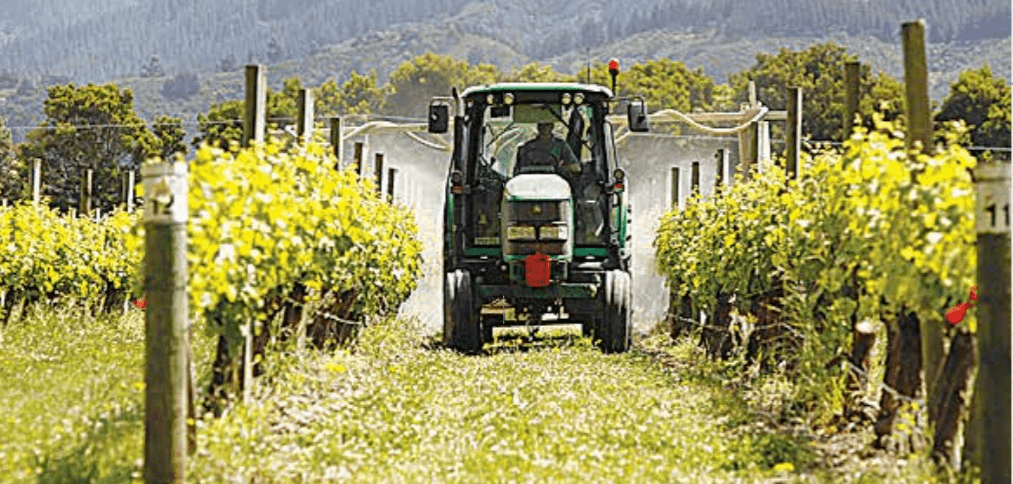Spray protocols to quantify and optimise spray deposits applied to dormant grapevines (trunks, heads, cordons and canes)
By Monika Walter and David Manktelow
This project aims to develop a spray assessment protocol to enable spray deposition quantity and quality measurements for pruning wounds, canes, cordons, vine heads and trunks and to support growers in sprayer set-up and application rate as well as volume decisions for dormant vine targets.
Spraying pruning cuts for protection against grape trunk diseases (GTD) and spraying dormant vines for mealybug control have been subject to some previous research funded by NZ Winegrowers and a set of guidelines for application rates and volumes for different dormant vine targets has been presented to industry. However, there is still a lack of understanding around quantification of the spray deposits required and achieved for different pest and disease targets on dormant vines.
Spray application to dormant vine targets is extremely inefficient. Most sprayers are designed for foliage application. For drift control in dormant canopies large droplet size and low pressures are desirable, while spray coverage is generally favoured by high water rates, plus, the re-adjustment of the spray nozzle directions from canopy targets to the more focussed wood target zones. Drift and shadow effects from canes or branches are unwanted side effects when spraying dormant vines or fruit trees. Work on dormant spray application in kiwifruit has shown that only approximately 5% of the spray applied to dormant vines actually deposits on the target, with most of the rest lost to the ground. Recapture spraying is a useful option to improving spray use efficiency and minimising environmental loading of chemicals applied to dormant vines – but recapture or not, dormant applied sprays require specific sprayer setup to maximise potential deposits and efficacy.
This work is in parallel to research in the pipfruit industry – spraying of picking wounds and leaf scars. The apple research has shown, by following dye deposition and chemical residue analyses, that sprayer type greatly affects deposition onto woody tissues. Increasing water volume increases deposition, so does double passing (i.e. spraying twice from opposite directions). The methods and approaches learned in postharvest apple spraying will be adopted and are reflected in the team make-up. Our team composition represents previous and concurrent work, with the corresponding pathology and entomology expertise (Sustainable Farming Fund project SFF404838). However, in the first instance, we do not aim to study control efficacy, instead targeting product application efficacy, quantifying and qualifying deposition and coverage for these difficult spray targets.
This article first appeared in the June / July 2018 issue of the New Zealand Winegrower magazine.

















